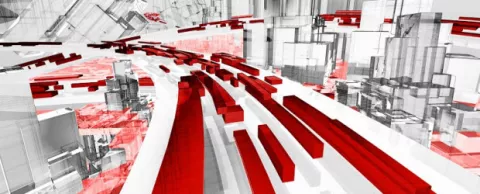
Not long ago, the concept of cars, trucks and buses that drove themselves seemed like something that might happen in the distant future. But not anymore. Call them what you like: self-driving cars, autonomous vehicles, AVs -- but many in the automotive and technology industries working to build them are confident we'll be seeing them on our roads within a few short years. Others say the timeline may be more like 15-20 years, but it seems inevitable that disruptive change is on the horizon. In the U.S., states have been passing legislation and regulating how driverless vehicles are tested. And just last week Germany's parliament approved legislation to allow car makers to test driverless cars on public roads.
What it boils down to is that cities need to be prepared to accommodate the next generation of vehicles and support them with the technological and other infrastructure they'll need (think road modifications, signage and marking, communications and more). The story below highlights comments from transportation officials who spoke at our Smart Cities Week conference in Silicon Valley last week. Their observations and insights on what city leaders and planners can expect and how to prepare for driverless vehicles will likely help them develop the solutions that best suit their cities – and provide mobility for all of their citizens. They also addressed some big questions that haven't been answered yet. — Doug Peeples
Driverless cars present challenges for cities. It's more than a matter of planning for them and integrating them into the urban environment although that alone is a major undertaking. There are investments to be made, a tall order for cities that already work within tight budget constraints. But there are benefits too, and some of them may be surprising.
"New vehicle technology does present opportunities to remedy problems caused by private vehicles… such as traffic congestion, accidents and deaths, diminished air quality," said Doug Johnson, principal transportation planner for the Bay Area Metropolitan Transportation Commission. "But we need to pursue investment in multiple outcomes, including more inclusivity for disabled and low-income citizens." Johnson said he believes self-driving vehicles should not only make mobility safer and more convenient, but with the right investments they could also help deal with what he described as "significant income inequality" in the Bay area. As he and other panelists noted, transportation needs to be affordable for all citizens.
What to expect
Adam Stocker, an innovative mobility researcher with the UC Berkeley Transportation Sustainability Research Center, said "Autonomous vehicles will change how cities look dramatically." But that's not necessarily bad. His take is that automated mobility will probably be less expensive than private vehicle ownership overall and that an easy-to-use transportation network of autonomous vehicles will probably encourage more people to use it.
Stocker also said he expects the need for downtown parking to decrease (because vehicles could drive themselves to another out-of-the-way location until needed), which would free up precious urban land for other uses. He said he also expects shared ownership of vehicles – a trend he thinks will grow – will reduce the numbers of vehicles on roads as more people realize they can cut costs with a joint ownership arrangement and take advantage of what would otherwise be down time for the car. Of course, that trend also would help reduce traffic congestion.
Partnerships will be essential if cities are to successfully accommodate driverless vehicles, and not just technology partners. Tracy Larkin-Thomason, deputy director of the Nevada Department of Transportation, said her agency is working with insurance companies, car makers and a variety of vendors. One reason the agency is talking with car makers and tech vendors is because firewalls and security will need to be reconfigured to accommodate the communications networks and sensors driverless vehicles will depend on. "We're not used to doing this, but it's essential."
Johnson added that while cities should have partners, city leaders will need to organize their transportation projects and ensure that partners understand their needs. "We need to carefully articulate with our partners what our expected outcomes are."
Policy: another challenge
Policies and regulations will need an overhaul, too. Vinn White, a specialist leader with Council Global Lead Partner Deloitte and a former deputy assistant secretary for the U.S. Department of Transportation, said that for state transportation and department of motor vehicles departments, safety is their primary issue. They will need to change current policies that require motor vehicles to have steering wheels and pedals to permit autonomous vehicles which eventually won't have them. He added that now there isn't a lot of cooperation and coordination between states.
Larkin-Thomason agreed. California has the most stringent regulations governing driverless vehicles; Nevada's are less so, and Michigan has very few. While many states are pursuing regulations and projects, only Michigan, Pennsylvania and Ohio are working on projects that cross state borders. As she put it, achieving a practical level of cooperation won't be easy. "State governments are very rigid. We're not there yet."
New transportation technology needs new funding options
"As vehicle technology changes, the way we fund transportation will need to change as well," Johnson said. "We need pricing tools that would shift toward vehicle miles traveled. The best way we can tackle congestion is through pricing options – and people don't like that much even though they want the congestion to go away.
"As a long-term transportation planning agency we need to know what cities need [in terms of financial assistance]. We owe it to our cities to start working on that number. We need to come up with a funding game plan but we need help with what that solution is."
Doug Peeples is a Portland, Oregon-based writer specializing in technology and energy. Follow @smartccouncil on Twitter.



